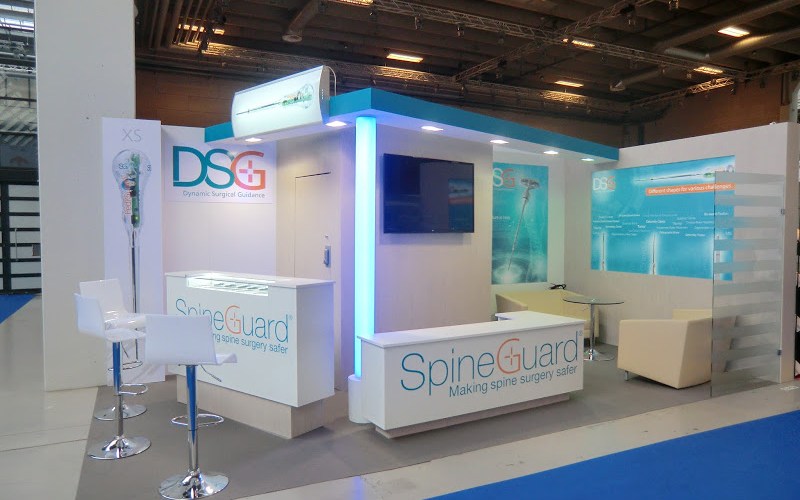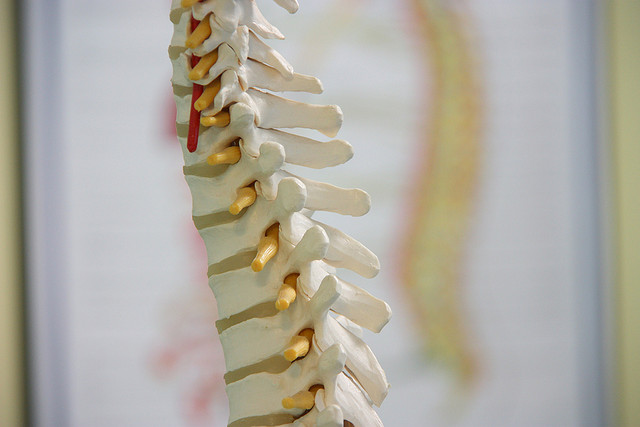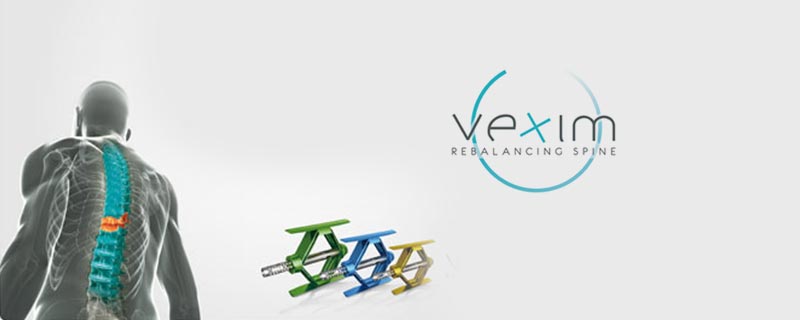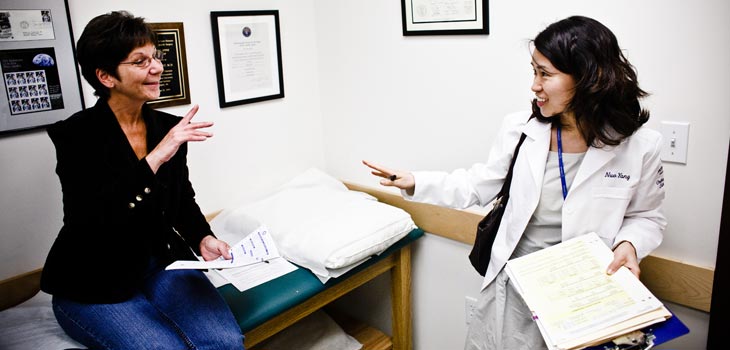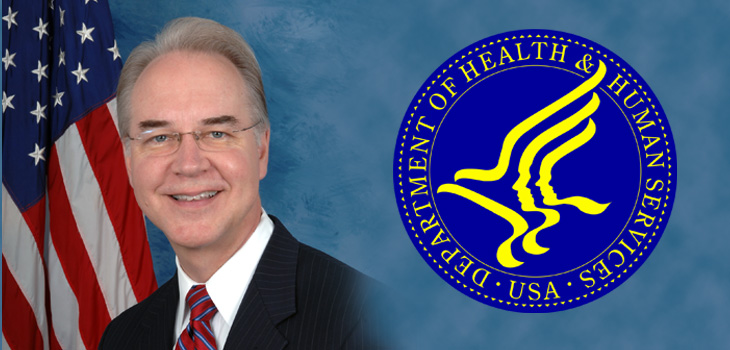TOULOUSE, France–(BUSINESS WIRE)–Regulatory News:
VEXIM (Paris:ALVXM) (FR0011072602 – ALVXM), a medical device company specializing in the minimally invasive treatment of vertebral fractures, today announces its consolidated annual results (IFRS1) as of December 31st, 20162.
« Our 2016 results represent a historic turning point for VEXIM. VEXIM has reached profitability and generated a positive cash flow over the second half of 2016. These excellent results validate our profitable growth strategy. This trend should continue during 2017, as we expect sales growth of 30% to 35%, and full-year profitability. We expect to launch SpineJack® in the United States – the largest market for vertebral fractures – in 2018, further generating strong sales growth. We will decide and announce our business strategy for the US, aimed at capturing market share and building shareholder value, later this year. These achievements demonstrate that VEXIM is on the right track to become a global leader in the market of spine trauma », said Vincent Gardès, CEO of VEXIM.
Strong sales increase, solid gross margin on sales and positive net income in the second half of 2016
For the first time, and in order to comply with international standards, VEXIM issues its consolidated financial statements, in accordance with International Financial Reporting Standards (IFRS). Appendixes, on page 9 of this press release, include the conversion tables from French accounting standards to IFRS for the consolidated income statements of the financial years 2015 and 2016.
|
IFRS consolidated statement
(in millions of Euros)
|
|
As of December 31st |
|
Variation |
|
First Half |
|
Second Half |
|
|
|
2016 |
|
2015 |
|
|
|
2016 |
|
2016 |
|
| Revenue |
|
18.5 |
|
13.9 |
|
33% |
|
8.6 |
|
9.9 |
|
| Gross margin |
|
13.4 |
|
9.9 |
|
35% |
|
6.3 |
|
7.1 |
|
| Gross margin (% of sales) |
|
72.2% |
|
71.5% |
|
– |
|
73.8% |
|
70.9% |
|
| Operating expenses |
|
-16.5 |
|
-14.7 |
|
12% |
|
-9.2 |
|
-7.4 |
|
| Operating loss |
|
-3.2 |
|
-4.8 |
|
-33% |
|
-2.9 |
|
-0.3 |
|
| Income tax & finance costs, net |
|
0.5 |
|
– |
|
– |
|
0.1 |
|
0.4 |
|
| Profit / (loss) for the period |
|
-2.7 |
|
-4.8 |
|
-44% |
|
-2.8 |
|
0.1 |
|
|
|
|
|
|
|
|
|
|
|
|
|
2016 highlights
- New sales record in the 4th quarter, at €5.2 million;
- Finalized patient enrollment for the international clinical trial intended to support our 510(k) submission to the FDA – announced on February 21st, 2017;
- Initiated a medico-economic study comparing the SpineJack® to conservative orthopedic management (bracing) on 100 patients with a 1 and 2-year follow-up;
- Secured long-term cash position, thanks to a successful private placement of €10.4 million in January 2016;
- Strengthened our management team with the appointments of François Cathelineau as VP Operations, Sébastien Lemoine as VP International Sales & Market Development, followed by the appointment of Russell Powers as VP & General Manager of the US activities, in January 2017.
€18.5 million in sales: VEXIM continues to expand at a steady pace (+33%)
VEXIM’s sales for 2016 have reached €18.5 million, an increase of 33% compared to 2015. This significant growth underlines the effectiveness of the direct sales strategy implemented by the company for SpineJack® in Europe, as well as the broader adoption of the technology.
The gross margin on sales (“gross margin”) also increased by 35% compared to 2015, reaching €13.4 million (€6.3 million in the first half of 2016), representing 72.2% of sales.
The gross margin maintained itself at a high percentage due to growing sales in Europe and competitive pricing, with the support of our direct-sales strategy. The 70.9% gross margin on sales in the second half of 2016 is explained by growing sales performance in countries with indirect distribution.
Impact of gross margin and cost control: strongly reducing annual losses and generating net profit in the second half of 2016
The second half of 2016 marked a historic turning point for VEXIM, which proved its ability to achieve profitable growth and financial discipline.
Operating expenses only increased by 12% in 2016, up to €16.5 million, while sales grew 33% over the same period. Such control of operating costs contributed to further decrease the operating losses, from €4.8 million loss in 2015 to €3.2 million loss to in 2016. The net loss recorded in 2016, which includes income tax and finance costs of €0.5 million, is €2.7 million compared to €4.8 million in 2015.
For the first time since its creation in 2006, VEXIM recorded a net profit of €0.1 million in the second half of 2016. This major step is the result of the strategy followed over the past two years by VEXIM, with the aim of self-financing:
- Gained market shares in France and abroad, to drive further revenue growth;
- Used its technological advance to support competitive pricing and a high gross margin;
- Drew on productivity gains and effective cost control to maintain the beneficiary’s capacity and generate cash.
Positive cash flows in the second half of the year (+€0.3 million)
As of December 31st, 2016, the Group’s cash position stood at €9.8 million (vs. €9.4 million as of June 30th, 2016), boosted by a free cash flow of €0.3 million in the second half of the year. The current cash position and future cash flows should allow VEXIM to self-finance, in line with its ambitions. VEXIM plans to generate a positive free cash flow from operations over the full year in 2017.
2017 objectives: Perspectives for a strong and profitable growth
Despite an increasingly demanding “baseline” VEXIM aims to keep achieving significant sales growth in 2017, combined with full-year profitability:
- Expected strong sales growth of +30% to +35%;
- Achieve profitability on a full-year basis;
- FDA 510(k) filing in the United States during the last quarter, for an expected market launch in the first half of 2018;
- Continue to expand abroad with new partnerships in Brazil, Australia and South Korea;
- Keep on innovating in the treatment of vertebral fractures, by developing new products to extend the current portfolio.
To support VEXIM’s accelerated development, the Board of Directors has approved a “technical”3 project to transfer VEXIM’s listing from Alternext to the regulated market of Euronext Paris.
Financial reporting schedule:
1st quarter sales: April 19th, 20174
About VEXIM, the innovative back microsurgery specialist
Based in Balma, near Toulouse (France), VEXIM is a medical device company created in February 2006. The Company has specialized in the creation and marketing of minimally invasive solutions for treating traumatic spinal pathologies. Benefitting from the financial support of it longstanding shareholder, Truffle Capital5, and from OSEO public subsidies, VEXIM has designed and developed the SpineJack®, a unique implant capable of repairing a fractured vertebra and restoring the balance of the spinal column. The company also developed the MasterflowTM, an innovative solution for mixing and injecting orthopedic cement that enhances the accuracy of the injection and optimizes the overall surgical procedure. The company counts 66 employees, including its own sales teams in Europe and a network of international distributors. VEXIM has been listed on NYSE Alternext Paris since May 3rd 2012. For further information, please visit www.vexim.com
SpineJack®6, an innovative implant for treating Vertebral Compression Fractures
The SpineJack® is designed to restore a fractured vertebra to its original shape, restore the spinal column’s optimal anatomy and thus remove pain and enable the patient to recover their functional capabilities. Thanks to a specialized range of instruments, inserting the implants into the vertebra is carried out by minimally invasive surgery, guided by X-ray, in approximately 30 minutes, which is intended to enable the patient to be discharged shortly after surgery. The SpineJack® range consists of 3 titanium implants with 3 different diameters, thus covering 95% of vertebral compression fractures and all patient morphologies. SpineJack® technology benefits from the support of international scientific experts in the field of spine surgery and worldwide patent protection through to 2029.
Nom : VEXIM
Code ISIN : FR0011072602
Code mnémonique : ALVXM
1 The results have been audited and approved by the Board of Directors of Vexim on March 21st, 2017.
2 Consolidated financial statements presented in Appendix.
3 Transfer of listing with no capital raising.
4 Indicative date, subject to changes.
5 Founded in 2001 in Paris, Truffle Capital is a leading independent European private equity firm. It is dedicated to investing in and building technology leaders in the IT, life sciences and energy sectors. Truffle Capital manages €550m via FCPRs and FCPIs, the latter offering tax rebates (funds are blocked during 7 to 10 years). For further information, please visit www.truffle.fr and www.fcpi.fr.
6 This medical device is a regulated health product that, with regard to these regulations, bears the CE mark. Please refer to the Instructions for Use.
Appendixes
IFRS consolidated financial statements
|
Consolidated income statements
|
|
|
|
|
|
| In thousands of Euros |
|
Year ended December 31, |
|
|
|
2015 |
|
2016 |
|
|
|
|
|
|
|
| Revenue |
|
13 888 |
|
18 504 |
|
| Cost of sales |
|
(3 956) |
|
(5 143) |
|
|
|
|
|
|
|
| Gross profit |
|
9 932 |
|
13 361 |
|
|
|
|
|
|
|
| Selling and marketing expenses |
|
(8 470) |
|
(8 744) |
|
| Operations expenses |
|
(2 839) |
|
(3 041) |
|
| General and administrative expenses |
|
(3 916) |
|
(5 165) |
|
| Other gains / (losses), net |
|
465 |
|
426 |
|
|
|
|
|
|
|
| Operating loss |
|
(4 828) |
|
(3 163) |
|
|
|
|
|
|
|
| Finance income / (loss), net |
|
2 |
|
(28) |
|
|
|
|
|
|
|
| Loss before income tax |
|
(4 826) |
|
(3 191) |
|
| Income tax expense |
|
(43) |
|
468 |
|
|
|
|
|
|
|
| Loss for the year |
|
(4 869) |
|
(2 723) |
|
|
|
|
|
|
|
| Attributable to: |
|
|
|
|
|
| Equity holders of the Company |
|
(4 869) |
|
(2 723) |
|
|
|
|
|
|
|
|
|
|
|
|
|
| Earnings per share attributable to the equity holders of the Company |
|
|
|
|
|
|
|
|
|
|
|
| Basic earnings per share |
|
(0,77) |
|
(0,36) |
|
|
|
|
|
|
|
|
|
|
|
|
|
| Diluted earnings per share |
|
(0,77) |
|
(0,36) |
|
|
|
|
|
|
|
|
Consolidated balance sheet – assets
|
|
|
|
|
|
|
|
As at December 31, |
|
| In thousands of Euros |
|
2014 |
|
2015 |
|
2016 |
|
|
|
|
|
|
|
|
|
| Intangible assets |
|
765 |
|
1 029 |
|
2 229 |
|
| Property and equipment |
|
733 |
|
935 |
|
1 382 |
|
| Other receivables |
|
231 |
|
218 |
|
171 |
|
| Deferred tax assets |
|
– |
|
– |
|
522 |
|
|
|
|
|
|
|
|
|
| Non-current assets |
|
1 730 |
|
2 182 |
|
4 304 |
|
|
|
|
|
|
|
|
|
| Inventories |
|
2 344 |
|
3 650 |
|
3 675 |
|
| Trade receivables |
|
2 560 |
|
3 606 |
|
4 670 |
|
| Other receivables |
|
1 336 |
|
1 829 |
|
2 255 |
|
| Cash and cash equivalents |
|
10 115 |
|
4 208 |
|
9 765 |
|
|
|
|
|
|
|
|
|
| Current assets |
|
16 355 |
|
13 293 |
|
20 365 |
|
|
|
|
|
|
|
|
|
| Total assets |
|
18 085 |
|
15 474 |
|
24 669 |
|
|
|
|
|
|
|
|
|
|
Consolidated balance sheet (equity and liabilities)
|
|
|
|
|
|
|
|
As at December 31, |
|
| In thousands of Euros |
|
2014 |
|
2015 |
|
2016 |
|
|
|
|
|
|
|
|
|
| Ordinary shares |
|
634 |
|
635 |
|
762 |
|
| Share premium |
|
51 027 |
|
51 185 |
|
61 109 |
|
| Other reserves |
|
(10) |
|
423 |
|
1 204 |
|
| Retained earnings |
|
(37 788) |
|
(42 658) |
|
(45 383) |
|
| Equity attributable to equity holders of the Company |
|
13 863 |
|
9 585 |
|
17 693 |
|
|
|
|
|
|
|
|
|
| Non-controlling interests |
|
– |
|
– |
|
– |
|
|
|
|
|
|
|
|
|
| Total equity |
|
13 863 |
|
9 585 |
|
17 693 |
|
|
|
|
|
|
|
|
|
| Repayable advances |
|
867 |
|
712 |
|
427 |
|
| Retirement benefit obligations |
|
113 |
|
148 |
|
111 |
|
| Non-current liabilities |
|
981 |
|
860 |
|
538 |
|
|
|
|
|
|
|
|
|
| Repayable advances |
|
106 |
|
210 |
|
314 |
|
| Trade payables |
|
1 385 |
|
2 586 |
|
2 365 |
|
| Other payables |
|
1 750 |
|
2 159 |
|
3 541 |
|
| Provisions for other liabilities and charges |
|
– |
|
73 |
|
218 |
|
| Current liabilities |
|
3 241 |
|
5 029 |
|
6 438 |
|
|
|
|
|
|
|
|
|
| Total liabilities |
|
4 222 |
|
5 889 |
|
6 976 |
|
|
|
|
|
|
|
|
|
| Total equity and liabilities |
|
18 085 |
|
15 474 |
|
24 669 |
|
|
|
|
|
|
|
|
|
|
Consolidated cash-flow statement
|
|
|
|
|
|
|
|
| In thousands of Euros |
|
|
|
|
|
6-month period ended |
|
|
2015 |
|
2016 |
|
June 30, 2016 |
|
December 31, 2016 |
|
|
|
|
|
|
|
|
|
| Net income / (loss) |
|
(4 869) |
|
(2 723) |
|
(2 806) |
|
83 |
| Adjustments for: |
|
|
|
|
|
|
|
|
| Depreciation of tangible assets and amortization of intangible assets |
|
168 |
|
289 |
|
136 |
|
153 |
| Impairment of receivables |
|
(12) |
|
74 |
|
83 |
|
(9) |
| Impairment of inventories |
|
(64) |
|
121 |
|
20 |
|
101 |
| Share-based payments |
|
438 |
|
698 |
|
277 |
|
421 |
| Change in retirement benefit obligation |
|
35 |
|
55 |
|
27 |
|
28 |
| Variation in provisions for risks |
|
73 |
|
145 |
|
167 |
|
(22) |
| Income tax |
|
43 |
|
(468) |
|
35 |
|
(503) |
|
|
|
|
|
|
|
|
|
| Cash generated by / (used) in operations before changes in working capital |
|
(4 188) |
|
(1 809) |
|
(2 061) |
|
252 |
|
|
|
|
|
|
|
|
|
| Changes in working capital |
|
|
|
|
|
|
|
|
| Inventories |
|
(1 242) |
|
(147) |
|
(12) |
|
(135) |
| Trade receivables |
|
(1 033) |
|
(1 139) |
|
(693) |
|
(446) |
| Other receivables |
|
(492) |
|
(380) |
|
(436) |
|
56 |
| Trade payables |
|
1 201 |
|
(221) |
|
(518) |
|
297 |
| Other payables |
|
510 |
|
1 369 |
|
158 |
|
1 211 |
| Cash generated by / (used) in changes in working capital |
|
(1 056) |
|
(518) |
|
(1 501) |
|
983 |
|
|
|
|
|
|
|
|
|
|
|
|
|
|
|
|
|
|
| Net cash generated by / (used) in operating activities |
|
(5 244) |
|
(2 327) |
|
(3 562) |
|
1 235 |
|
|
|
|
|
|
|
|
|
| Cash flows from investing activities |
|
|
|
|
|
|
|
|
| Purchases of tangible assets |
|
(384) |
|
(763) |
|
(595) |
|
(168) |
| Purchases of intangible assets |
|
(286) |
|
(1 164) |
|
(443) |
|
(721) |
| Disposal of assets |
|
16 |
|
– |
|
– |
|
– |
|
|
|
|
|
|
|
|
|
| Net cash used in investing activities |
|
(654) |
|
(1 928) |
|
(1 038) |
|
(890) |
|
|
|
|
|
|
|
|
|
| Cash flows from financing activities |
|
|
|
|
|
|
|
|
| Proceeds from issuance of ordinary shares |
|
158 |
|
10 472 |
|
10 453 |
|
19 |
| Direct costs paid related to share issuance |
|
– |
|
(421) |
|
(421) |
|
– |
| Repayable advance |
|
(106) |
|
(210) |
|
(210) |
|
– |
| Treasury shares |
|
(83) |
|
(55) |
|
– |
|
(55) |
|
|
|
|
|
|
|
|
|
| Net cash generated by / (used) in financing activities |
|
(31) |
|
9 786 |
|
9 822 |
|
(36) |
|
|
|
|
|
|
|
|
|
| Net increase / (decrease) in cash and cash equivalents |
|
(5 929) |
|
5 531 |
|
5 222 |
|
309 |
|
|
|
|
|
|
|
|
|
| Cash and cash equivalents at beginning of the year/ period |
|
10 115 |
|
4 208 |
|
4 208 |
|
9 419 |
| Effect of exchange rate fluctuations |
|
22 |
|
26 |
|
(12) |
|
38 |
|
|
|
|
|
|
|
|
|
| Cash, cash equivalents at end of the year/ period |
|
4 208 |
|
9 765 |
|
9 419 |
|
9 765 |
|
|
|
|
|
|
|
|
|
|
Conversion tables from French accounting standards to IFRS
|
|
|
|
|
|
|
|
|
|
|
|
|
|
|
|
|
|
| In thousand Euros |
|
2015
French GAAP
presented
under IAS / IFRS |
|
|
|
Share-based
payments
|
|
R&D projects |
|
Retirement
benefit
obligations
|
|
Others |
|
2015
IAS/ IFRS |
|
|
|
|
|
|
|
(1) |
|
(2) |
|
(3) |
|
(4) |
|
|
|
|
|
|
|
|
|
|
|
|
|
|
|
|
|
|
|
| Revenue |
|
13 888 |
|
|
|
|
|
|
|
|
|
|
|
13 888 |
|
| Cost of sales |
|
(3 956) |
|
|
|
|
|
|
|
|
|
(21) |
|
(3 977) |
|
|
|
|
|
|
|
|
|
|
|
|
|
|
|
|
|
| Gross profit |
|
9 932 |
|
|
|
– |
|
– |
|
– |
|
(21) |
|
9 911 |
|
|
|
|
|
|
|
|
|
|
|
|
|
|
|
|
|
| Selling and marketing expenses |
|
(8 316) |
|
|
|
(154) |
|
|
|
|
|
|
|
(8 470) |
|
| Operations expenses |
|
(2 788) |
|
|
|
(32) |
|
(18) |
|
|
|
|
|
(2 839) |
|
| General and administrative expenses |
|
(3 659) |
|
|
|
(252) |
|
|
|
(20) |
|
21 |
|
(3 909) |
|
| Other gains / (losses), net |
|
480 |
|
|
|
|
|
|
|
|
|
|
|
480 |
|
|
|
|
|
|
|
|
|
|
|
|
|
|
|
|
|
| Operating loss |
|
(4 351) |
|
|
|
(438) |
|
(18) |
|
(20) |
|
– |
|
(4 828) |
|
|
|
|
|
|
|
|
|
|
|
|
|
|
|
|
|
| Finance income / (loss), net |
|
2 |
|
|
|
|
|
|
|
|
|
|
|
2 |
|
|
|
|
|
|
|
|
|
|
|
|
|
|
|
|
|
| Loss before income tax |
|
(4 349) |
|
|
|
(438) |
|
(18) |
|
(20) |
|
– |
|
(4 826) |
|
| Income tax expense |
|
(43) |
|
|
|
|
|
|
|
|
|
|
|
(43) |
|
|
|
|
|
|
|
|
|
|
|
|
|
|
|
|
|
| Loss for the year |
|
(4 392) |
|
|
|
(438) |
|
(18) |
|
(20) |
|
– |
|
(4 869) |
|
|
|
|
|
|
|
|
|
|
|
|
|
|
|
|
|
| Attributable to: |
|
|
|
|
|
|
|
|
|
|
|
|
|
|
|
| Equity holders of the Company |
|
(4 392) |
|
|
|
(438) |
|
(18) |
|
(20) |
|
– |
|
(4 869) |
|
|
|
|
|
|
|
|
|
|
|
|
|
|
|
|
|
| In thousand Euros |
|
2016
French GAAP
presented
under IAS / IFRS
|
|
|
|
Share-based
payments
|
|
R&D projects |
|
Retirement
benefit
obligations
|
|
Others |
|
2016
IAS/ IFRS
|
|
|
|
|
|
|
|
(1) |
|
(2) |
|
(3) |
|
(4) |
|
|
|
|
|
|
|
|
|
|
|
|
|
|
|
|
|
|
|
| Revenue |
|
18 504 |
|
|
|
|
|
|
|
|
|
|
|
18 504 |
|
| Cost of sales |
|
(5 099) |
|
|
|
|
|
|
|
|
|
(44) |
|
(5 143) |
|
|
|
|
|
|
|
|
|
|
|
|
|
|
|
|
|
| Gross profit |
|
13 405 |
|
|
|
– |
|
– |
|
– |
|
(44) |
|
13 361 |
|
|
|
|
|
|
|
|
|
|
|
|
|
|
|
|
|
| Selling and marketing expenses |
|
(8 452) |
|
|
|
(293) |
|
|
|
|
|
|
|
(8 744) |
|
| Operations expenses |
|
(2 985) |
|
|
|
(56) |
|
|
|
|
|
|
|
(3 041) |
|
| General and administrative expenses |
|
(4 768) |
|
|
|
(349) |
|
|
|
(91) |
|
44 |
|
(5 165) |
|
| Other gains / (losses), net |
|
426 |
|
|
|
– |
|
|
|
|
|
|
|
426 |
|
|
|
|
|
|
|
|
|
|
|
|
|
|
|
|
|
| Operating loss |
|
(2 374) |
|
|
|
(698) |
|
– |
|
(91) |
|
– |
|
(3 163) |
|
|
|
|
|
|
|
|
|
|
|
|
|
|
|
|
|
| Finance income / (loss), net |
|
(28) |
|
|
|
|
|
|
|
|
|
|
|
(28) |
|
|
|
|
|
|
|
|
|
|
|
|
|
|
|
|
|
| Loss before income tax |
|
(2 402) |
|
|
|
(698) |
|
– |
|
(91) |
|
– |
|
(3 191) |
|
| Income tax expense |
|
468 |
|
|
|
|
|
|
|
|
|
|
|
468 |
|
|
|
|
|
|
|
|
|
|
|
|
|
|
|
|
|
| Loss for the year |
|
(1 934) |
|
|
|
(698) |
|
– |
|
(91) |
|
– |
|
(2 723) |
|
|
|
|
|
|
|
|
|
|
|
|
|
|
|
|
|
| Attributable to: |
|
|
|
|
|
|
|
|
|
|
|
|
|
|
|
| Equity holders of the Company |
|
(1 934) |
|
|
|
(698) |
|
– |
|
(91) |
|
– |
|
(2 723) |
|
|
|
|
|
|
|
|
|
|
|
|
|
|
|
|
|
| In thousand Euros |
|
First half 2016
French GAAP
presented
under IAS / IFRS |
|
|
|
Share-based
payments
|
|
R&D projects |
|
Retirement
benefit
obligations
|
|
Others |
|
First half 2016
IAS/ IFRS
|
|
|
|
|
|
|
|
(1) |
|
(2) |
|
(3) |
|
(4) |
|
|
|
|
|
|
|
|
|
|
|
|
|
|
|
|
|
|
|
| Revenue |
|
8 564 |
|
|
|
|
|
|
|
|
|
|
|
8 564 |
|
| Cost of sales |
|
(2 226) |
|
|
|
|
|
|
|
|
|
(21) |
|
(2 246) |
|
|
|
|
|
|
|
|
|
|
|
|
|
|
|
|
|
| Gross profit |
|
6 338 |
|
|
|
– |
|
– |
|
– |
|
(21) |
|
6 318 |
|
|
|
|
|
|
|
|
|
|
|
|
|
|
|
|
|
| Selling and marketing expenses |
|
(4 787) |
|
|
|
(140) |
|
|
|
|
|
|
|
(4 927) |
|
| Operations expenses |
|
(1 604) |
|
|
|
(15) |
|
|
|
|
|
|
|
(1 619) |
|
| General and administrative expenses |
|
(2 772) |
|
|
|
(122) |
|
|
|
|
|
21 |
|
(2 873) |
|
| Other gains / (losses), net |
|
249 |
|
|
|
– |
|
|
|
|
|
|
|
249 |
|
|
|
|
|
|
|
|
|
|
|
|
|
|
|
|
|
| Operating loss |
|
(2 574) |
|
|
|
(277) |
|
– |
|
– |
|
– |
|
(2 851) |
|
|
|
|
|
|
|
|
|
|
|
|
|
|
|
|
|
| Finance income / (loss), net |
|
82 |
|
|
|
|
|
|
|
|
|
|
|
82 |
|
|
|
|
|
|
|
|
|
|
|
|
|
|
|
|
|
| Loss before income tax |
|
(2 493) |
|
|
|
(277) |
|
– |
|
– |
|
– |
|
(2 770) |
|
| Income tax expense |
|
(36) |
|
|
|
|
|
|
|
|
|
|
|
(36) |
|
|
|
|
|
|
|
|
|
|
|
|
|
|
|
|
|
| Loss for the year |
|
(2 529) |
|
|
|
(277) |
|
– |
|
– |
|
– |
|
(2 806) |
|
|
|
|
|
|
|
|
|
|
|
|
|
|
|
|
|
| Attributable to: |
|
|
|
|
|
|
|
|
|
|
|
|
|
|
|
| Equity holders of the Company |
|
(2 529) |
|
|
|
(277) |
|
– |
|
– |
|
– |
|
(2 806) |
|
|
|
|
|
|
|
|
|
|
|
|
|
|
|
|
|
(1) Share-based payments valued in accordance with IFRS 2 and relative to BSA and BSPCE plans. Expense allocated to each department based on the employees’ affiliation.
(2) Restatement of year 2015, regarding a project which, activated according to the French accounting standards in the previous years, does not meet all 6 criteria of IAS 38.57, namely of how the intangible fixed asset will generate probable future economic benefits.
(3) Recalculated pension liabilities as of December 31st, 2015, to reveal actuarial gains pursuant to IAS 19.
(4) Reclassifications: depreciation on production equipment, namely mould manufacturing initially recorded under “General and administration costs”, which have been reclassified under “Cost of goods sold”.


